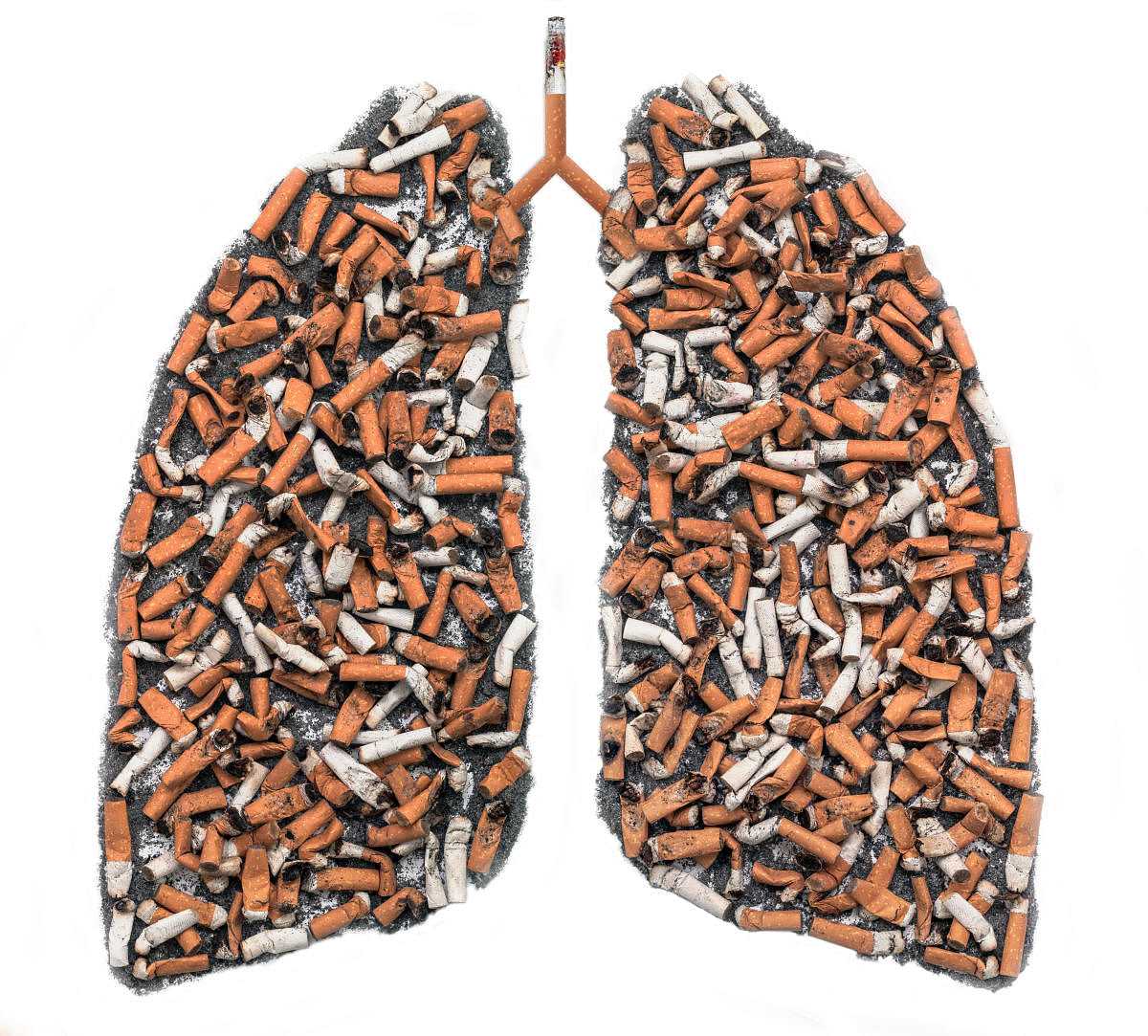
An architect, Archana (name changed), had her first puff when she was in college. “My best friend used to smoke and before I knew, I got into it. Besides, I was curious. In the campus too, teachers and senior students were smoking. But once you start smoking, it takes over you. When I went on to do my Masters in Barcelona, a party city, I was once again surrounded by smokers. And I continued to smoke. But I wasn’t feeling good inside. I wanted to quit. I tried to ration my cigarettes — from 10 cigarettes (on my worst days) to two a day. But that didn’t help because I was always craving for my next puff. It was around this time that I was planning to move back to India. I thought this was the ideal time to kick the habit. It was time.” Archana stubbed out her last cigarette four years ago.
World No Tobacco Day, which falls on May 31, while focussing on lung health, reminds yet again that it’s never too late to quit.
“Use of tobacco leads to nearly 3,000 deaths every day in India. While smoking tobacco is a major cause of cancer, heart disease and respiratory diseases, even smokeless tobacco is harmful in
equal measure. Together, smoking and chewing tobacco cause over 2,700 cancer deaths every day,’’ informs Dr S Venkatesh, lead interventional cardiologist and head, department of cardiology, Aster RV Hospital.
“Tobacco is the single most known and preventable cause of cardio-vascular death and disability in the world. It is commonly known that smoking increases the risk of heart disease but even smokeless tobacco is equally harmful,” he says.
Smoking is as much a public health issue as a personal one. Not to forget that it leaves a hole in your pocket.
“Tobacco-related health expenditure of the society is many times more than the revenue and employment generated by all forms of tobacco, not to speak of the devastation it brings about in the afflicted patients and families,’’ explains Dr Venkatesh.
Tax it
According to Upendra Bhojani, faculty, Institute of Public Health, taxation has shown to be an effective tool in bringing down the usage of tobacco.
“But there are conditions for it to become more effective. One, it is effective mainly for the formal market and not for informal markets like segments of
bidis and few such products where tax administration is weak. Two, it will be effective only if taxes are high enough —tobacco, for instance, has a relatively low price elasticity and is an addictive product, so demand would indeed fall when taxes are high enough to push up the prices,” he says.
“WHO recommends that the taxes should be at least 70% of the retail price. In India, there is enough room to enhance taxes on tobacco products,” Bhojani adds.
The use of e-cigarettes, meanwhile, has been of great concern.
“The availability of e-cigarettes, especially online, has made a negative impact on the tobacco control measures. Using e-cigarette or vaping is touted as a safe method of nicotine usage and in fact, sadly, many from the medical fraternity are recommending this to patients as a tool for quitting tobacco,’’ says Dr Venkatesh.
Hazardous
“Vaping is hazardous to health because of the solvents inhaled. It is used by the tobacco industry as a device for ‘bait-and-switch’. Youngsters who get hooked on to nicotine via vaping eventually take up tobacco smoking. This and continued surrogate advertisements by celebrities indirectly promoting tobacco is causing a huge setback to the efforts of government as well as activists in curbing the tobacco menace,” he informs.
“A Global Adult Tobacco Survey was conducted in 2009-2010 and repeated in 2016-2017. For the age group of 15-24 years, the prevalence of tobacco use was 18.5% for 2009-2010. It came down to 12.4% in the second round. There was almost a six per cent point decline,” says Bhojani.
“When it comes to the age of initiation into tobacco, the average age has gone up in the second round from that of the first round of survey, which is also a positive sign,” he says. Pictorial warnings on cigarettes do make smoking less cool. But does it help in quitting?
Bhojani points out that according to Global Adult Tobacco Survey, 62% of smokers thought of quitting after seeing the pictorial warnings.
“Tobacco industry is a self-limiting market. Generally, tobacco users die prematurely in their productive age. So you have to recruit new consumers. You go to any kiosk selling tobacco and you will most likely notice point-of-sale advertising. Indirect and surrogate tobacco advertising are quite prevalent today,” Bhojani explains.
“While the governments have done well in the last few years to enforce the prevailing law, there is a need to specifically strengthen the enforcement of ban on advertising and promotion of tobacco,” he adds.
Anti-smoking campaigners point out that it is a tough road ahead. Only robust measures can clear the air.
“The need of the hour is continued education about tobacco harm, strict enforcement of the provisions of COTPA, ban on surrogate advertisements and ban on sale of e-cigarettes to minors,” adds Dr Venkatesh.
It helps to have motivational factors to quit. “I had my reasons,” adds Archana. “And once you quit, you start feeling good pretty fast. You can inspire others.”
